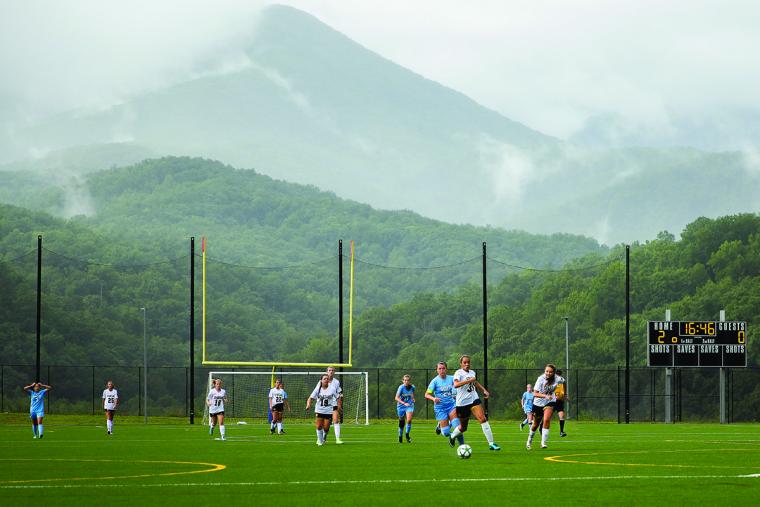

Equally exciting is the fact (until the recent impact of the coronavirus) that there has been no sign of a slowdown in the youth sports marketplace. The economic impact generated by this booming industry can be leveraged by convention and visitors bureaus, community leaders and others to drive new initiatives and support innovation in an everchanging landscape.
So, what does the future hold for sports tourism following the COVID-19 crisis? We will see youth sports tourism rebound before we see a major rebound in corporate travel. That’s because youth sports tourism is driven at the grass roots level where one team at a time seeks ways to be a regional leader.
Following the previous recession, the fires in Gatlinburg, hurricanes in Florida and the Carolinas, floods in Houston and other major events, it was youth sports tourism that frequently took the early lead in filling hotel rooms. There is every reason to believe it will occur again. Not the least of these are the re-bookings and new events being scheduled in tournament facilities across the U.S.
When properly executed in the right location, tournament facilities produce incredible economic impact through overnight bed tax, jobs, ancillary real estate development, new retail sales tax collections, improvements to quality-of-life and increased property values. These outcomes are very attractive to economic development agencies and therefore will continue to provide fertile ground for public private partnerships, leading to new and more versatile facilities.
In fact, to use a slang phrase, big players are now sniffing around the marketplace. These are major corporations and major investors who have become aware of the fragmented and rapidly growing youth sports market. This, along with major investments by communities investing in new venues, is creating a race among destinations seeking to capitalize on this unique opportunity.
Most importantly, competition and consolidation will drive changes that destinations should be preparing for:
1. Facilities will be developed to host a variety of sports, entertainment, recreation and special events as well as support local usage. Flexibility in design will be a key as many of these venues will host disparate sports – as well as other gatherings.
2. Consolidation among rights holders will impact events, negotiations and repeat bookings. Relationships will continue to be a key component to securing business.
3. Consolidation of events, to combine championships that were cancelled or postponed because of COVID-19, can also drive increased enrollment in upcoming events.
4. Growth in non-traditional sports like esports, competition rock climbing, BMX, surfing and others will create new inventory demand/opportunities.
5. Technologies such as live-streaming and mobile activations will impact visitation, sponsorship, destination marketing and other areas. Don’t plan for now, plan for what’s coming next.
6. Facilities will be developed at the same time as larger retail and hotel and other mixed-use rather than the model of ‘build it and they will come’ that was so popular in the past – but which wasn’t always an accurate predictor of business.
7. Public private partnerships including medical sector, developers, hotel/lodging industry, sports and others will define the best destinations in the marketplace.
8. Outsourced management will dominate the youth sector as it does the stadium, conventions and arena markets because of the reduced risk, increased performance and private sector innovation ability.
9. Economic and financial reporting will expand beyond overnight hotel stays into jobs creation, sales tax increment and other traditional economic impact measures.

1. Build A Winning Team. New initiatives don’t happen in a vacuum and aren’t accomplished by one person alone. Leverage your future economic impact and its associated value to develop a winning project team for your initiative. Whether it’s a national championship, new local/regional event or a new facility, the economic impact forecast is a powerful tool for uniting different groups around your vision. This includes your city/county government, local residents, club owners, local businesses, sponsors, real estate developers, park districts/departments and others who can be defined as stakeholders in a community.
2. Develop a Communication Plan. What does “economic impact” even mean? The truth is this: it means different things to different people and is widely misunderstood. Develop a script for each audience you need to engage with and communicate the value in terms that most resonate. Rephrasing “economic impact” to direct spending, room nights or tax collection can make all the difference. Everyone has the all-important question, “What does this mean for me?” – and of course, you want to be able to frame a meaningful answer.
3. Get Strategic, Early. Things change fast. Opportunities that are here today may be gone tomorrow. It’s common (and best practice) for every organization to have an annual strategic plan, but what about a three-, five- or 10-year outlook? These longer-term plans will set your organization up to take the necessary step now for opportunities that will come later. This might include beginning the process to start a new taxing district to fund new projects. You never know when you might be approached with an amazing new development opportunity. This also applies to the structure of your organization including manpower, budget and experience. Are you building the team that can support new events and selecting an operator that will be a true partner for your facilities?
4. Turn Your Forecast into New Projects. Forecasted economic impact projections from a reputable firm are one of the most important keys to obtaining funding and community support for new projects. This data aligns community decision makers, destination marketing organizations, citizens and the local business community around the goals and expectations for a potential project. If you have your eye on developing a new sports asset, it’s time to get a professional, institutional grade economic impact forecast from a qualified third party.
5. Increase Your Budget & Flexibility. Whether you’re bringing a cycling race to a sleepy downtown or hundreds of teams to an indoor arena for a volleyball tournament, these events draw visitors with huge collective spending power. Aligning with your local city government on the goals, economic impact projections and vision for the event may mean they agree to partner with you and kick in some cash, too. Many municipalities have the ability to grant or underwrite events with a demonstrable ROI and benefits for their residents.
6. Focus on Operational Excellence. Nothing creates repeat business like great customer service…and repeat business (events) that grow over time are a key strategy to increasing your economic impact. Marketing can lure people in, but service is what keeps them coming back. Evaluate your internal teams, facility operators and event owners – and ask yourself whether you are creating a culture and system that will bring guests back (and have them tell their friends, too).
7. Secure Key Community Partnerships that benefit local kids. The income disparity in youth sports is real. Your ability to grow your and leverage your economic impact will be amplified if you can create opportunities for local and low-income kids. Partnering to share inventory or to include local teams in tournaments is a highly effective way to build political and social capital with local government officials, park and recreation departments, non-profits, and local businesses. Hosting skill clinics and teaching beginners the fundamentals can also create a lasting legacy in the community you visit and can mean more of a demand for events in the future. SDM
• Research by Evergreen Research Inc.

